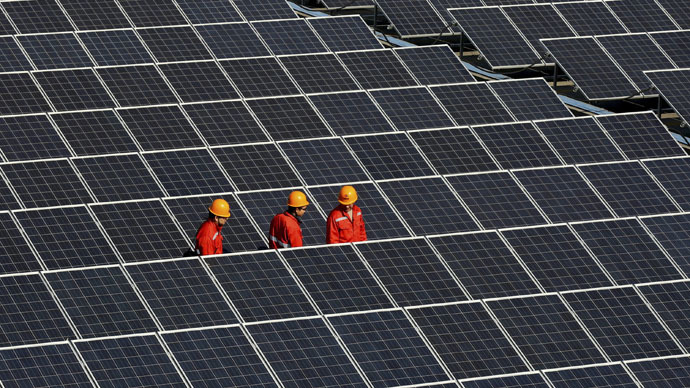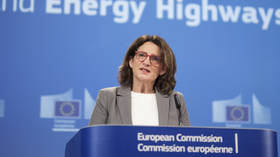‘Historic opportunity’: Renewables start competing with fossil fuels

The cost of supplying wind and solar energy has been plummeting since 2010, with accelerated deployment putting it on par with the costs of fossil fuel energy generation in some of the areas, says the International Renewable Energy Agency (IRENA).
Hydro, biomass, geothermal and wind power are now competitive with or cheaper than coal, oil and gas-fired power stations, despite oil prices are falling , according to a IRENA report. The IRENA study called Renewable Power Generation Costs in 2014, shows how renewable energy technology has changed over the past four years.
“Renewable energy projects across the globe are now matching or outperforming fossil fuels, particularly when accounting for externalities like local pollution, environmental damage and ill health,” said IRENA Director-General Adnan Amin. “The plummeting price of renewables is creating a historic opportunity to build a clean, sustainable energy system and avert catastrophic climate change in an affordable way,” he added.
It’s been the decline in equipment and technology costs that have driven down the cost of wind and solar. “Renewable power generation equipment costs are falling, even as the technologies themselves continue becoming more efficient. The combination of these two factors has led to the continual, often rapid, decline in the cost of electricity from renewable-based technologies,” the report says.

According to the report, the costs of solar photovoltaics (PV) and concentrating solar power (CSP) have declined substantially and will continue to decline as the technological learning process is still continuing. Solar PV module prices in 2014 were around 75 percent lower than at the end of 2009, IRENA reports.
The costs of hydroelectric power, a 100-year-old technology, stay therefore quite stable. Wind power is the most mature of the new renewable technologies but here the costs are also decreasing, though more slowly than solar. The IRENA report shows that onshore wind costs have only dropped by an average of 10 percent across the world over the past four years. However, this is still significant as wind is already very competitive with new build coal and gas-fired stations, the two cheapest fossil fuel generation sources.
There are no technical hurdles to the integration of the variable technologies of solar PV and wind power either, costs for transmission and distribution are minimal. Nevertheless, a range of factors such as the specific electricity-system configuration, existing generation assets, share of variable renewable penetration, distribution of renewable resources and existing market structures can add to overall system costs.
Even taking a systems-based approach does not adequately address the environmental and health externalities of the fossil fuels used for power generation, says the report.
The IRENA report also outlines there is a great deal of variation between renewable costs around the world. “Total installed costs of renewable power generation technologies vary significantly by country and region, as well as between technologies”.
The majority of the growth in energy production is in developing countries such as India, China, and Indonesia. For the 1.3 billion people who lack access to electricity, renewables are currently the cheapest source of energy. Much work, therefore, remains to be done for the world to unlock the potential of renewables, the report concludes. “Deployment is not increasing fast enough to meet the world’s ambitious goals for a truly sustainable power system”.
Russia has an advantage in production of hydrocarbons while renewable energy generation is not highly cost effective so far, according to Russian Energy Minister Aleksandr Novak. Nevertheless, the Russian Ministry of Energy expects 6,000 MW of renewable energy generation capacity will be put into operation by 2020, Novak said Friday.












